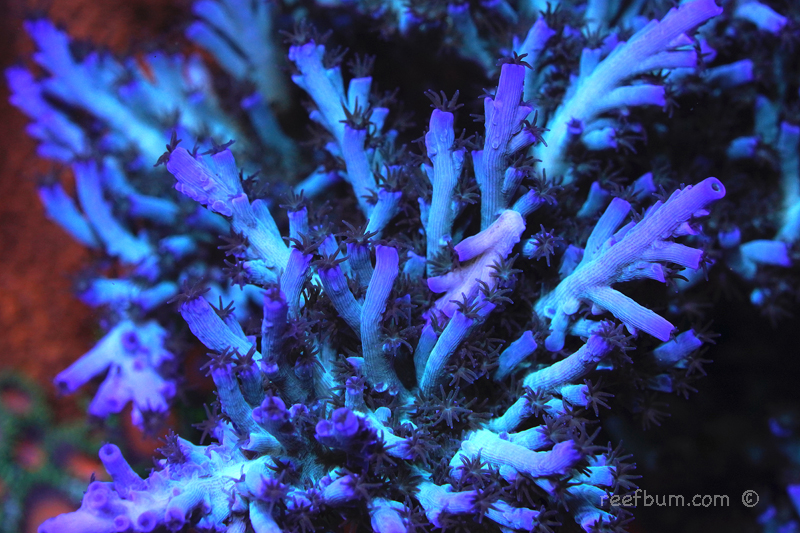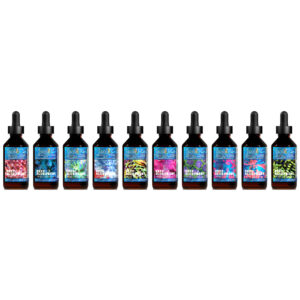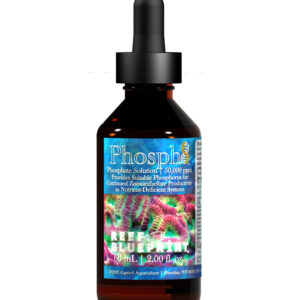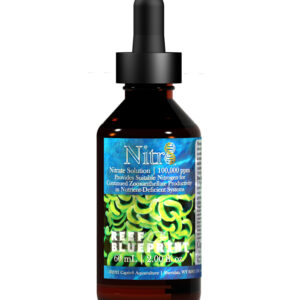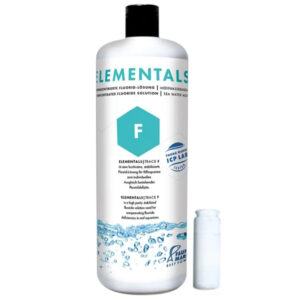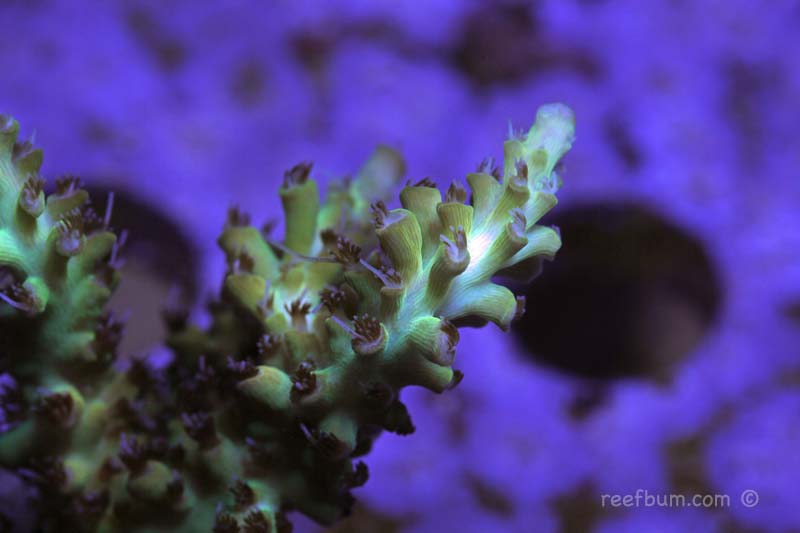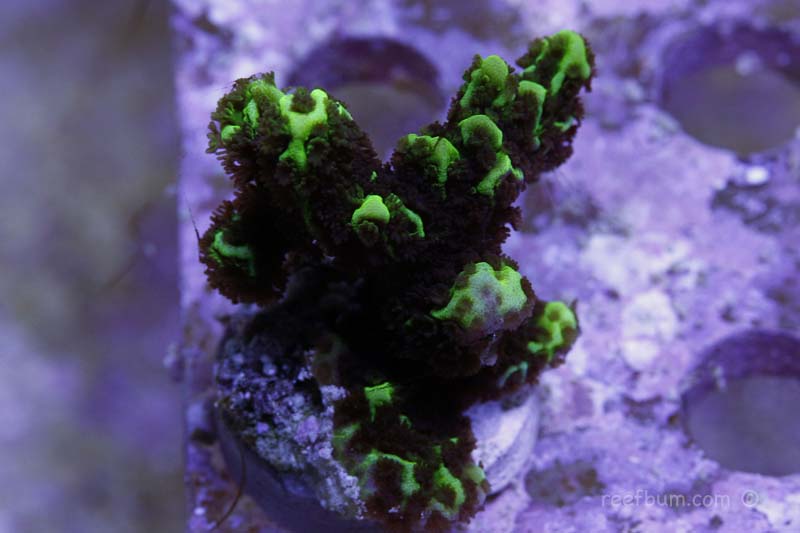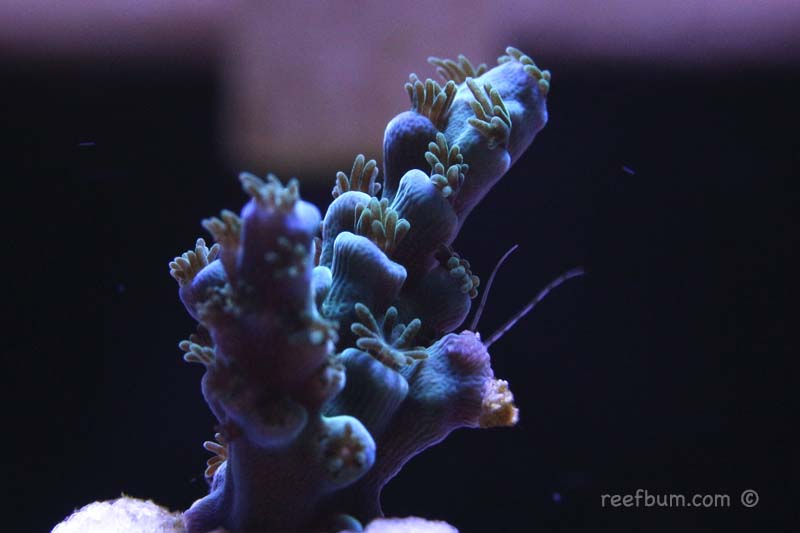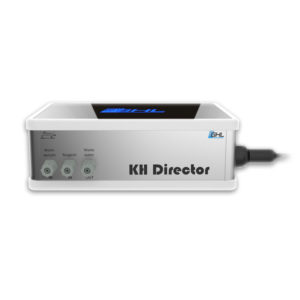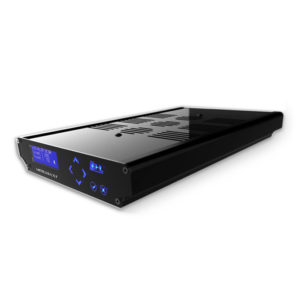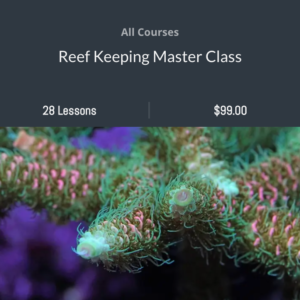SPS or small polyp stony corals are typically found in the shallow parts of our world’s coral reefs in areas with intense light and turbulent water. These corals have calcium carbonate skeletons and a thin layer of living tissue with polyps. SPS can be very demanding corals to keep in a captive reef tank. Not only do they require the strong lighting and flow they receive in nature, but they also need proper calcium and alkalinity supplementation.
Options for Calcium and Alkalinity Supplementation
Having either a calcium reactor or a doser to replenish the calcium and alkalinity sucked up by SPS is vitally important to having success with these corals. I have used both of these methods with a lot of success.
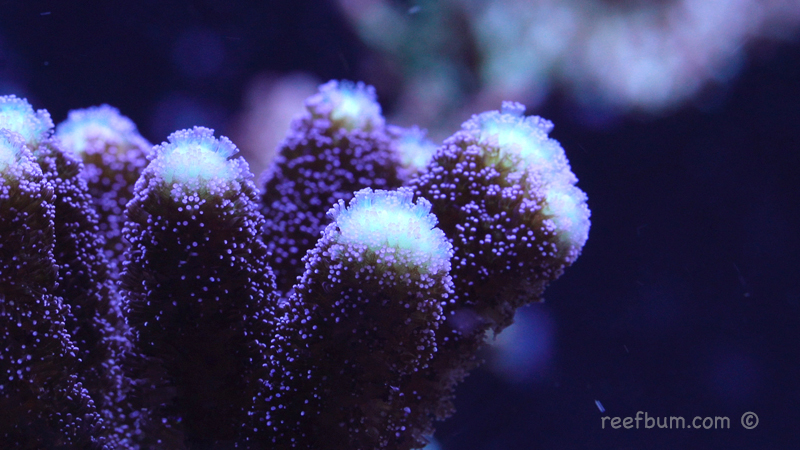
Two part alkalinity and calcium solutions such as the ESV B-Ionic Buffer System are popular since they are ready-made and can easily be adjusted to target specific calcium and alkalinity levels. Calcium reactors are also very popular. Once dialed in, these units allow you to “set it and forget it”. The pH of the effluent coming out of a calcium reactor is low, so it can help to have a second chamber to absorb some of the excess C02 that can lower pH.
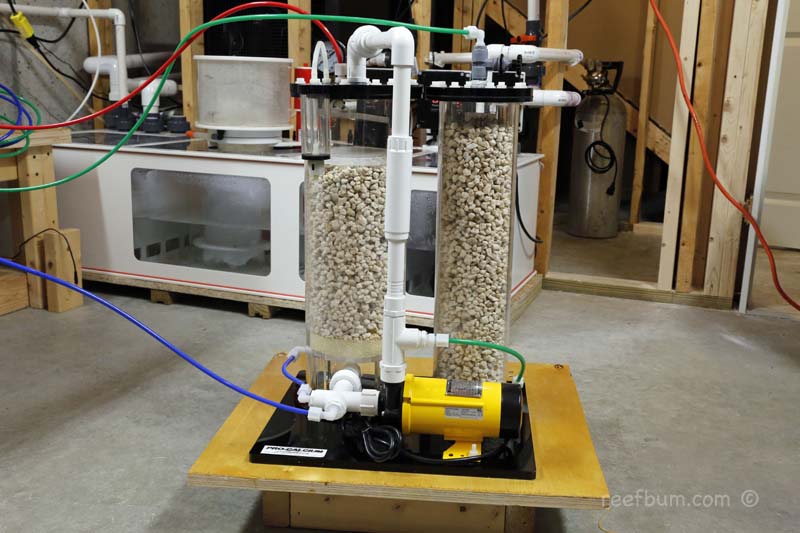
It may also be necessary to boost pH with a kalk reactor.
Kalk reactors use kalkwasser in conjunction with RO/DI water that is either gravity fed or forced through the unit via a separate dosing pump. The kalkwasser and RO/DI water need to be mixed by either a pump or stirrer inside the reactor. Why is low pH not a good thing for SPS and other types of corals? Excessively low pH will make it harder for these organisms to deposit calcium carbonate skeletons so levels should be maintained in the 7.8 to 8.4 range.
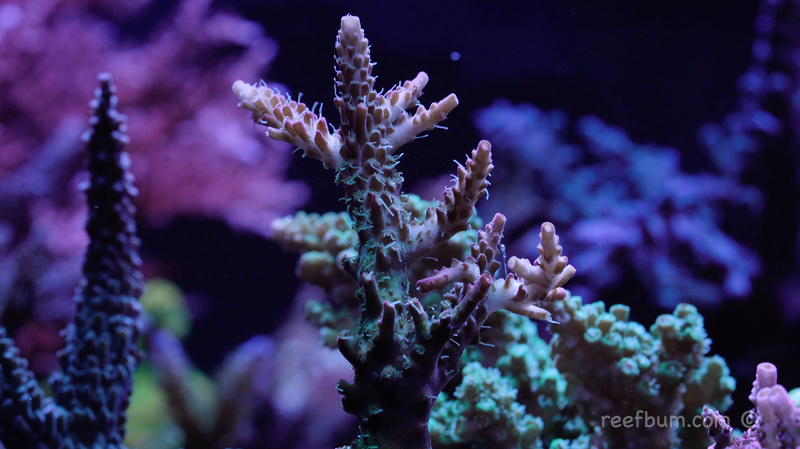
Nutrients and Stability
Another thing to consider are nutrient levels, which should be elevated to avoid starving SPS. I recommend maintaining nitrates between 2.5 to 10 ppm and phosphates in the .03 to .07 ppm range.
It is also critical to have stability for parameters such as salinity, nitrate, magnesium and calcium. Stable phosphate is important as well, but perhaps most important for SPS is keeping alkalinity at a consistent level. Any swings with this parameter over a short period of time usually spells trouble. An alkalinity monitor and controller such as GHL’s KH Director is a great way to maintain constant alkalinity. Stable parameters equals happy SPS.
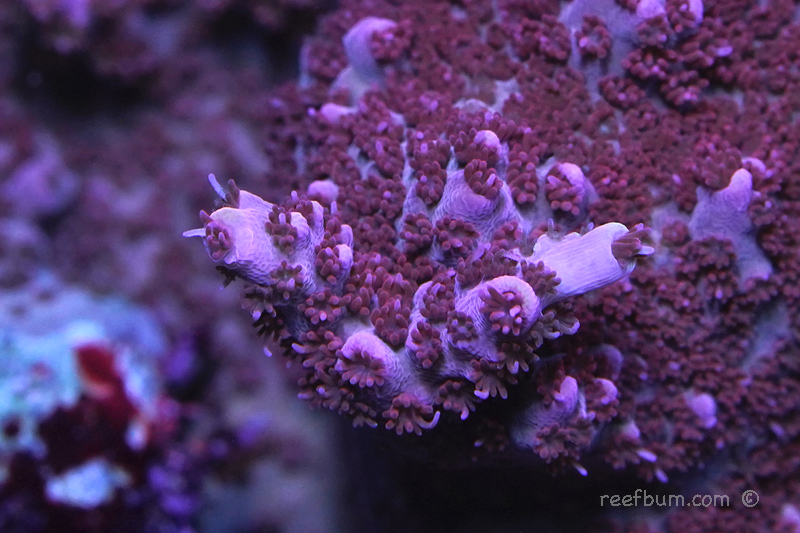
Lighting Options
Now let’s circle back to lighting. As I mentioned in the beginning, SPS require strong lighting and will do best under T5s, metal halides or LEDs when given the proper PAR. PAR stands for Photosynthetically Available Radiation and represents the light intensity produced by aquarium lighting. A meter can be used to determine PAR levels at different depths inside a tank. SPS will be happiest when PAR is in the 250 to 350 range.
In my years of experience in keeping SPS dominated reef tanks, I have had a lot of success using metal halides with supplemental T5 lighting. But I am an old school reefer. A lot of reefers rely solely on T5’s and have awesome looking tanks while many others use LED’s.
LED’s have gained popularity for a few reasons. One plus is they do not emit a lot of heat, making it less likely that you’ll need a chiller. And they typically use less electricity. LED bulbs also have a very long life span vs. metal halide and T5 bulbs, so extra money will be saved on replacing bulbs down the line. Additionally, high output LED lights now have the giddy-up to grow SPS really well.

LED lighting also has less spillage, with more of the light focused on corals versus the back or sides of the tank, although metal halide and T5 users point to this as a disadvantage given the better light spread produced by reflectors in those light fixtures. But LED’s have improved on this front with the advent of diffusers to help spread light.
Additionally, LED lights are dimmable, making it easy to adjust the output of LEDs to reproduce different types of lighting conditions such as a bright or a cloudy day. Also, you have the ability to easily change the color spectrum, giving reef keepers many different options to play with. The upfront costs for LED fixtures can be high but I know one old school reefer, me, who is willing to give them a try.
Importance of Strong Circulation
Another key factor to keeping a thriving SPS dominated reef tank is having a lot of water movement via strong circulation, and there are a number of reasons why. Number one is to avoid dead spots and to keep detritus (dead organic matter such as fragments of dead organisms or fish waste) from collecting at the bottom, which helps to keep nitrates and phosphates from building up in the tank. Accumulation of these elements can lead to algae outbreaks.
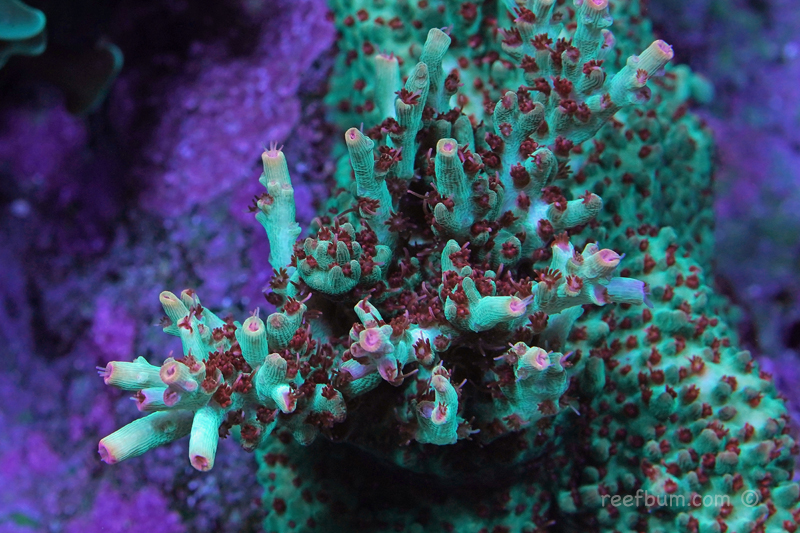
Strong flow also helps to deliver food and nutrients to the corals. Besides strong flow, random flow is also beneficial and can be achieved by using a pump such as the Vortech MP40 from Ecotech. The random flow from this sort of pump is great for SPS since it replicates waves moving across a natural reef.
Additional Resources
If you would like some help with a new tank build, including help designing a custom aquarium, or help re-configuring your current setup then you can visit this page for more information. And if you are looking to add some equipment, I do sell GHL, Pax Bellum, Reef Octopus Calcium and Kalk Reactors and Royal Exclusiv products, including Dreamboxes, which is the equipment I use and recommend. I also sell Reef Brite metal halide and LED fixtures as well as Maxspect & IceCap Gyres.
As for additional insights and information, please explore my many other reef tank and SPS related articles as well as my YouTube channel. For an even deeper dive into reef tank care you can check out my Reef Keeping Master Class. This online course is an immersive and one of a kind educational tool designed to help reef aquarium hobbyists build and maintain a beautiful SPS reef tank. The course is a series of video presentations with some supplemental video from my YouTube channel. There are also quizzes to help students retain and understand the information presented in the course.
Need some frags…..I can help with that as well 🙂 Please visit my SPS Frag store to see what is available.

